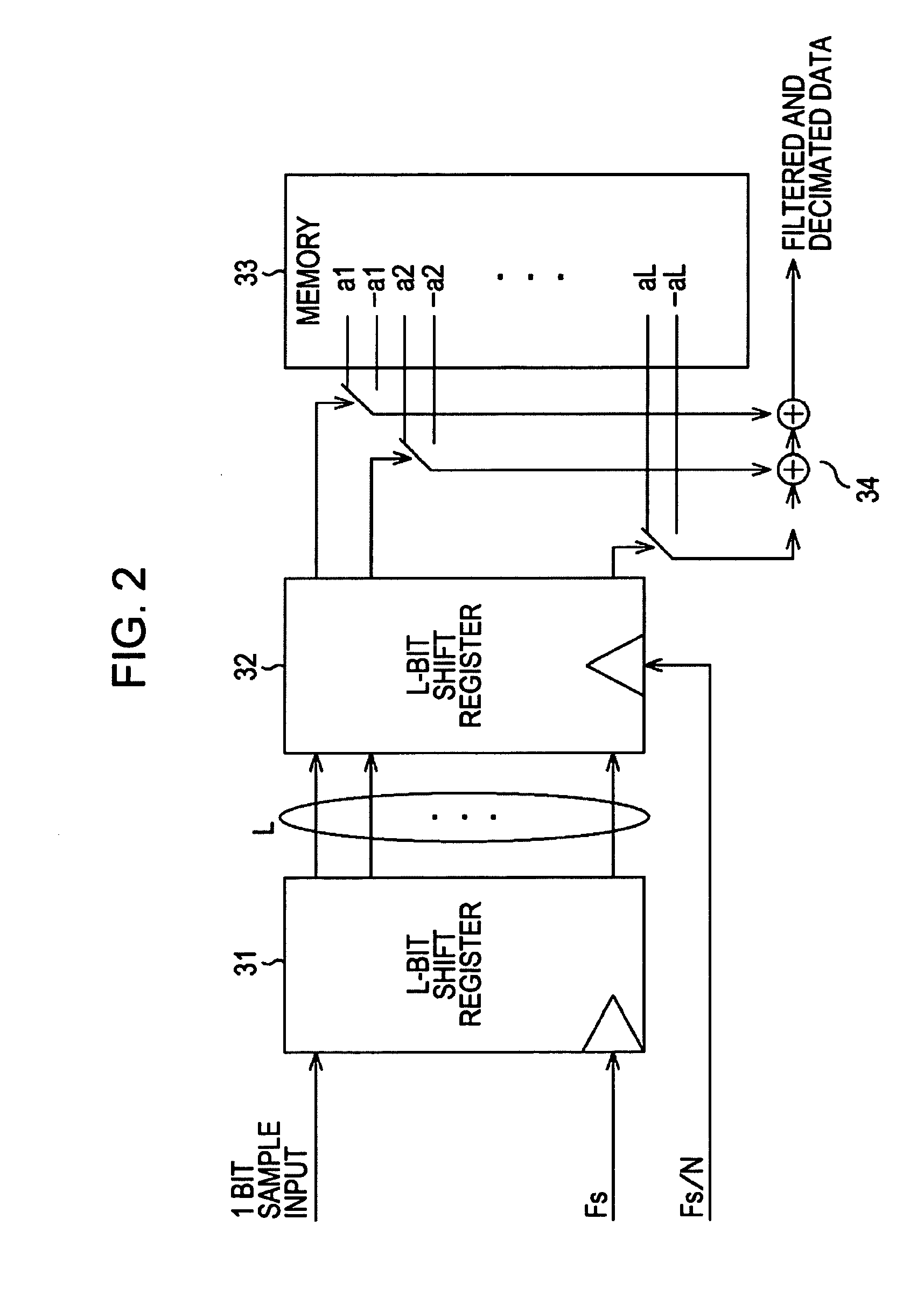Information Processing Device and Information Processing Method
a technology of information processing and information processing device, which is applied in the field of information processing device and information processing method, can solve the problems of implementation cost, implementation cost, power consumption and installation area, and the implementation cost of non-integer-ratio sampling rate conversion is generally great in the implementation cost in digital domain, and achieves the effect of low power consumption
- Summary
- Abstract
- Description
- Claims
- Application Information
AI Technical Summary
Benefits of technology
Problems solved by technology
Method used
Image
Examples
Embodiment Construction
[0132]The embodiments of the present invention will be described below with reference to the diagrams.
[0133]A digital block having a sampling rate converting function wherein the present invention is applied is arranged to execute signal processing which is basically the same as a known case described with reference to FIG. 12 with a receiving device, without increasing the sampling frequency of the digital filter output, wherein a favorable receiving signal without aliasing can be obtained.
[0134]FIG. 13 is a block diagram showing the configuration of a digital block 111 in IEEE 802.11g OFDM mode wherein a decimation filter method is applied.
[0135]Note that the portions corresponding to the known case described with reference to FIG. 3 uses the same reference numerals, and the description thereof will be omitted as appropriate.
[0136]A SINC filter 51 receives an input signal with frequency Y1 MHz and executes moving average calculations. A decimator 131 reduces the sampling rate of t...
PUM
 Login to View More
Login to View More Abstract
Description
Claims
Application Information
 Login to View More
Login to View More - R&D
- Intellectual Property
- Life Sciences
- Materials
- Tech Scout
- Unparalleled Data Quality
- Higher Quality Content
- 60% Fewer Hallucinations
Browse by: Latest US Patents, China's latest patents, Technical Efficacy Thesaurus, Application Domain, Technology Topic, Popular Technical Reports.
© 2025 PatSnap. All rights reserved.Legal|Privacy policy|Modern Slavery Act Transparency Statement|Sitemap|About US| Contact US: help@patsnap.com



